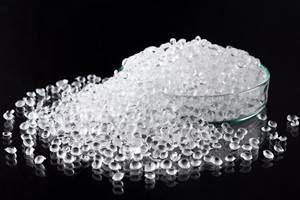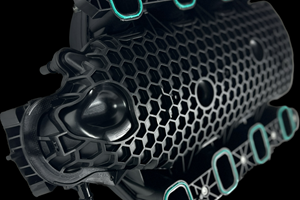Collaborative Mold Design Experiment Based on Clariant's Color Trends
Mold texture specialist and Clariant investigate interaction of social trends, color and textures.
Each year, we report on color trends for the upcoming year from a couple of the major colorant and additive suppliers, such as Americhem, Clariant and PolyOne. This year, Clariant was approached with an interesting challenge by Pel Plastic srl, an Italian company specializing in mold texturing and surface design. Inspired by Clariant’s color trend forecasting tool Pel Plastic asked Clariant to experiment with a radically different approach to product design.
A typical design project typically begins with a product concept and then quickly proceeds to drawings and prototype parts, all before selection of color and texture. Key account sales manager for Pel Plastics Mirella Sala noted that in viewing Clariant’s ColorForward 2019, it saw that the color trend tool is based on research into social trends and how they could influence the way consumers respond to different colors in the future. “This is something we have been doing with textures and the idea of looking at textures and color together—so that one can support and help express the other—seemed like a very interesting project.”
In consultation with Clariant experts, the Pel Plastic team began by picking one color from each of the four ColorForward 2019 themes, and created mood boards to help them better understand the potential interaction of theme, color and texture. Here’s how the project team brought color and texture together
● The Color: The designers ultimately selected the Do Not Disturb theme and the color “focus”—a transparent light green. The Do Not Disturb theme is based on the idea that technology makes it very easy for people to become distracted. Overwhelmed by choice, consumers look for ways to consciously limit options to make decisions easier. For that reason, the color palette of this theme—including the “focus” green selected by Pel Plastic, is simple, serene, soft, and minimal.
● The Texture: Once settled on the color, the Pel Plastic team began working on the texture that would be applied to a molded plastic. The result is very much in line with the trend theme—enigmatic, somewhat contradictory and distracting, but eventually resolving itself to bullseye focal point.
The clear PC polymer and the transparent color are rendered translucent, almost opaque, by the texture. The exterior surface of the prototype—a standard shape Pel Plastic uses to evaluate textures—is absolutely smooth, while the texture is created on the inside or backside of the part. This construction creates depth and an almost pearlescent appearance, despite the fact that there are no pearl pigments in the color.
Said Sala, “Through this project, we learned that color and texture together can have a completely different effect than either one alone…We will use the results in presentations to customers so that they can also better understand the relationship between plastics, color and texture. We appreciated the collaboration with Clariant very much and we would like to continue as a partner and develop more textures with colors in the future.”
Noting that this is exactly the purpose of the existence of Clariant’s global Color Works design and technology centers and the ColorForward tool, Alessandro Pozzati, ColorWorks industrial designer said, “The collaboration with Pel Plastics shows how we can help designers, brand managers and product developers to better understand and appreciate how color—and, in the case, texture too—can move people and even influence their purchasing decisions.”
Related Content
Compatibilizer for Nylon/ABS Alloys
CAI Performance Additives’ ST-AN3230 has shown to improve both compatibility and performance of nylon/ABS alloys.
Read MoreIntrinsic Viscosity Enhancer for rPET and PET Food-Contact Applications
Nexam’s Nexamite MO2100 rebuilds molecular weight and increases IV to enable upcycling of rPET.
Read MoreK 2022 Additives & Materials: Sustainability in the Lead
Nearly all of the new additives highlighted at the big show are aimed at enhancing recyclability of commodity resins and some volume engineering resins such as nylon and PC. A few new materials, on which we had not previously reported, also surfaced at K 2022.
Read MoreBASF Highlighting How They 'Make, Use and Recycle Future Solutions'
NPE2024: BASF is using its proprietary computer-aided engineering tool Ultrasim when designing for sustainability in a broad range of industries.
Read MoreRead Next
Making the Circular Economy a Reality
Driven by brand owner demands and new worldwide legislation, the entire supply chain is working toward the shift to circularity, with some evidence the circular economy has already begun.
Read MoreLead the Conversation, Change the Conversation
Coverage of single-use plastics can be both misleading and demoralizing. Here are 10 tips for changing the perception of the plastics industry at your company and in your community.
Read MoreFor PLASTICS' CEO Seaholm, NPE to Shine Light on Sustainability Successes
With advocacy, communication and sustainability as three main pillars, Seaholm leads a trade association to NPE that ‘is more active today than we have ever been.’
Read More


























